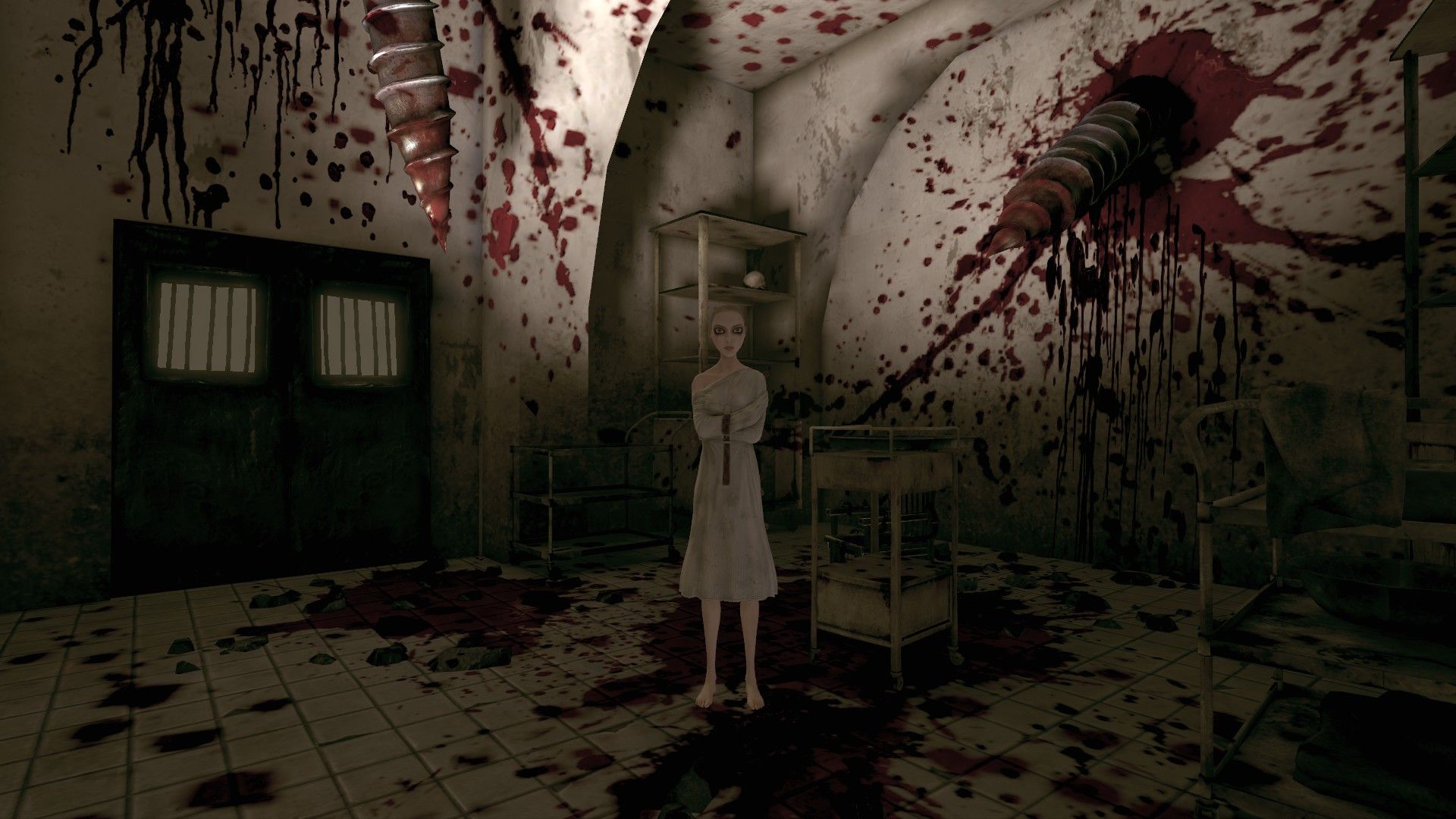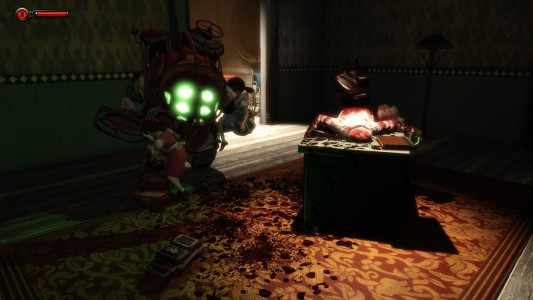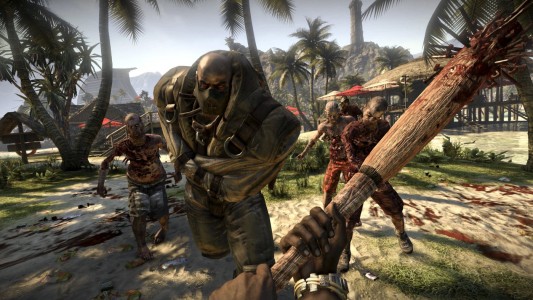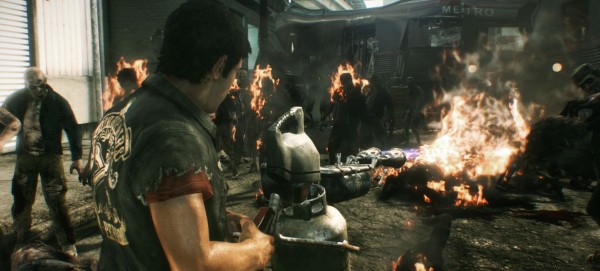It is heard time and time again. “Video games are too violent!” “Why do they have to be so violent?” “This level of violence is damaging!” Normally such gripes can be heard from parents regarding the video games their children are playing, which they may well have even bought for them. They occasionally appear as headlines in news stories, which often haphazardly link the playing of violent video games to the actions of individual perpetrators. Even with such resistance, violence continues to be a part of video games and can often serve as a foundation for gameplay, narrative or both together. It is hard to pin down violence into a single entity as it is used in various ways and can appear differently in each video game. Therefore, it becomes baffling when video game violence is regarded negatively overall. This outlook pigeon-holes violence as one particular thing and excludes the possibilities which different uses and simulations of violence may present.
Last year I undertook a master’s degree in Theatre and Performance. My dissertation involved researching the use of violence in performance and exploring particular theories and methods with a piece of practice (which was a play I wrote as part of the dissertation). Now then, you might be wondering what this has to do with video games? Well, I thought I’d share my findings to violence in performance, which I feel links particularly well to violence in video games.
Most games nowadays contain some form of violence. Whether it is the foundation of the gameplay or integral to the narrative, violence continues to rear its head. From a development perspective, its inclusion can make a level entertaining and challenging e.g. you have to kill all of the enemies to successfully complete your journey from point A to B. Violence can also be used gratuitously in video games as a means to visually stimulate and entertain. Such examples might be beating up prostitutes, running over civilians in a vehicle, shooting and chopping up the undead – the list is endless. These experiences allows players to experiment with violent behavior and can provide a satisfying sense of fun from the game. However,violence can be notably effective when used as a device to engage an audience with ideas and theories. In this respect, violence becomes a means to an end, which is more important for what it does as opposed to what it is. Applying this to video games, innovative interactions with violence can allow players to view and question violent behaviour differently, which could even incur considerations for its cause in the real world. But before we go further into this, let us have a look at what some gaming professionals have to say regarding violence in video games.
Cliff Bleszinski, Ken Levine and David Cage are renowned video game developers, designers and directors. Each have famously included the use of violence within their video games. Whether it’s sawing through the Locust Horde with a Mark 2 Lancer Assault Rifle (Gears of War, Bleszinski), electrifying and incinerating Splicers with plasmids (Bioshock, Levine) or pursuing and interacting with a serial killer (Heavy Rain, Cage). Violence appears in each game, but its use is viewed differently by each in terms of interaction for the player.

In an interview with the BBC, Cliff Bleszinski argues that his use of violence is to be taken more as tongue in cheek as opposed to a literal portrayal.
When we create our games we use a slapstick type of violence, we poke each other in the eyes and hit each other with frying pans like the old Warner Brothers cartoons.
The focus here is for the violence of Gears of War to come across as exaggerated, as Bleszinski explains that “you’re morally inclined to smile and giggle rather than be revolted.” However, he does point out that violence was not simply thrown into his games without careful consideration and appropriate edits where necessary.
We have an internal moral compass where we will decide, ‘No that’s a little bit too much,’ or we need to cut the violence back a little bit … there’s still ways of showing violence to an affecting user without showing too much.
Bleszinski highlights that his overall desire, when incorporating violent gameplay, is to give the player a satisfying sense of interaction. He states that the feedback from a violent fight is crucial when allowing the player to know when they are hitting and killing a target, which creates “a successful interactive experience.” It is this level of interaction which Bleszinski hopes players of the Gears of War franchise will achieve and therefore feedback into their overall enjoyment of the games.

In an interview with NPR, Ken Levine advises that violence continues to appear in video games for two reasons:
One of the reasons there’s been a lot of violence in video games is because it’s relatively easy to simulate … and generally it’s been … like action movies, there’s an easily perceivable market for it.
Levine refers to the violence of video games as a component tailored to the wants and desires of the gaming market as perceived by publishers and developers. A popular perception when he initially started working in the video games industry. However, he argues that this generated “a tendency for publishers and developers to underestimate the audience,” which is not significantly different from any other audience. Levine states that this misunderstanding lead to the exclusion of games which could appeal to a more intellectual set within the video game audience. With the possibilities that are now available via digital distribution, however, Levine highlights his optimism for the future of gaming as experimentation does not have to be sacrificed to achieve a “common denominator” as previously set by publishers and developers.
I think now we have a little more confidence, especially when you don’t have to appeal to 8 or 10 million people if you can just digitally distribute things like you can now. You can do that because you don’t need to spend the money to put it on trucks to get it to a store and deal with retailers and shippers and all that. So you can really try to have a one-to-one interaction with a smaller, more dedicated fan base and give them the thing they want. You couldn’t do that 20 years ago when I started.
He says he is often asked if Bioshock Infinite could have been madewithout the inclusion of violence and still have told the same story. Although he admits this is an “interesting” question, Levine states he would not have known how to make his version of Bioshock Infinite at that time without the inclusion of violence.
I wouldn’t have known how to make a game like Mario … I wouldn’t have known how to take this kind of story and turn it into a game about jumping on blocks … I like games myself, and I’ve always liked game-y things, so I wasn’t terribly interested in making a game that didn’t have a game component … When you have non-violent components, it would have been odd.

In an interview with Develop, David Cage describes his ambition as offering diversity to gamers which steers away from First Person Shooters and Role Playing Games.
There should be games for all ages, all tastes. Whatever is possible with interactive entertainment should be explored, and I don’t think we’re seeing that right now. The industry is too far balanced towards kids and teenagers. It’s too focused on violence.
This is an interesting statement from the man who gave us Fahrenheit and Heavy Rain – two games which focus explicitly on serial killers – and Beyond: Two Souls – a game which includes training in martial arts and using those skills on enemy pursuers. Although Cage appears to frown with disdain at violent video games (and by no means excluding his own back catalogue), exploring the possibilities of the interactive nature of video games is crucial to approaching violence differently. The ways in which we are able to interact with violence within a game directly impacts our individual impressions of it.
In games like Dead Island and Dead Rising, you can run over and carve up countless zombies and marvel at the fun of their bodies being torn to pieces by your doing. It’s bloody fun and is something you can do mindlessly without attaching any real thought to. The entertaining yet repetitive nature of these experiences allows you to quickly become desensitised to the violence; making it less about the specific and more about the overall gory fun of each game. Discussing these games with friends, stories regarding the ways zombies were splatted and mutilated by individually crafted weapons and vehicles would be shared. Where the specific comes into play is in moments of violence similar to those presented in Cage’s Heavy Rain.
[SPOILERS] When Ethan is given the choice to cut off his finger to save his son, this stayed with me after completion of the game and is a moment of violence that I am less inclined to forget. When I speak about this game today, I find myself constantly referring back to this moment as it provokes questions of how far one would go for family. To take it a step further, I would even consider my psychological processes when deciding whether to permanently loose a part of myself to save a member of my family. Should I do it or should I not? Or, perhaps more accurately, could I do it or could I not?
The difference here rests in the style and narrative of each game. Where Heavy Rain gives the player a heavily scripted and guided narrative, Dead Island and Dead Rising offer more in terms of a sandbox infrastructure. Their use of violence are therefore approached and responded to differently by the player. Cage’s negativity towards focusing on violence steers him away from any potential he may have, as a game developer, to utilise it differently within his games. Why not focus on giving players moments which allows them to alternatively interact with violence, rather than labeling it as a negative? As Heavy Rain and, to a degree, Beyond: Two Souls (the homeless section) gave us violent moments for consideration, then surely the focus should be on developing these ideas further before writing violence off as simply a popular focus for “kids and teenagers”. There is a varied audience for video games, which gives developers the opportunity to explore different uses and ideas of violence, as well as experimenting with ways of effectively communicating with players.
Of course, each of the examples given are open for interpretation. The commonality between them is that violent game play has been developed to successfully allow players to interact with the games in different ways. If you want to unwind after a hard day at work and have some fun by mowing down and splattering thousands of zombies, you can. If you want to enjoy violence as an integral part of a game’s narrative, you can. These different uses of violence open this choice up and allow us to enjoy video games in different ways. Where choice becomes stagnant is with the opinion that “video games are too violent”. Violence should not just be written off as ‘that thing’ there needs to be less of. What is much more interesting, and holds more possibility, are the answers generated by asking “how can we use violence differently?” This is not to suggest that all future games must now include a use of violence which aims to invoke heavy levels of critical thinking for the player. If anything, this would move a sense of choice even further away from gamers and game developers. However, the suggestion is emphasised to naysayers (including the apparently cynical David Cage) that they reevaluate the potential in using violence within video games.
Final Thoughts
One particular response stands out regarding the issue of further developing video game violence: “but how many variations and different interactions with violence can you really have from what’s already there?” It is a valid question, but one which would hold much more weight had the games industry not recently moved into next-gen gaming. We are only beginning to scratch the surface of possibilities which the latest generation of gaming consoles can offer us, which opens up a world of opportunity for future games that push their abilities. With the likes of the Oculus Rift, Sony’s Project Morpheus and Valve’s own VR headset also just around the corner, there has never been a better time to experiment with content and developing innovative interactions for players to experience.
When experimented with effectively, violence has the potential to provoke, engage and stimulate the viewer in ways which enables questioning and discussion. If game developers can successfully tap into this, then perhaps new methods of interaction with violence can arise within games. The result of this could lead to all sorts of new experiences and considerations for gamers, which include new ways of viewing violence and, where possible, further developing those which currently exist.







